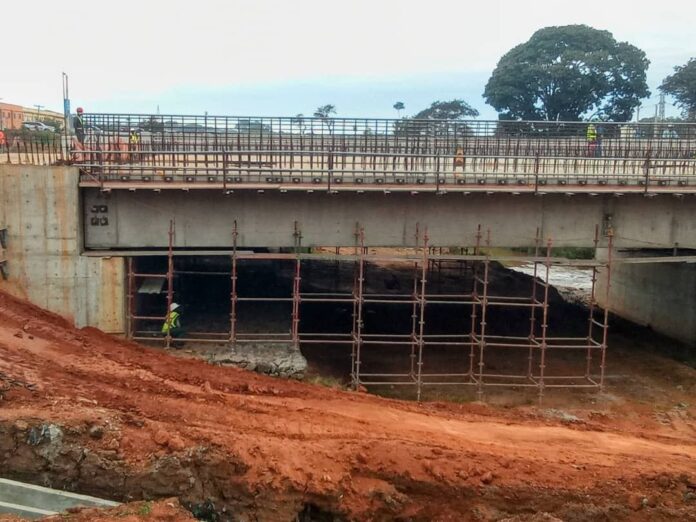By Burnett Munthali
The Lilongwe Bridge, once a key lifeline in Malawi’s capital city, has undergone a major transformation after the old structure was demolished several years ago.
Following its demolition, a new bridge was commissioned to replace the aging infrastructure, with hopes of easing traffic congestion and improving connectivity within Lilongwe and beyond.
This bridge plays a critical role in the daily lives of citizens and the economy at large, as it connects vital roads and commercial areas, serving as a gateway between major residential, business, and government zones.
For thousands of commuters, traders, and transport operators, the bridge is not merely a convenience but a necessity, as it facilitates the flow of goods, services, and people in and out of the city.

Recognizing its importance, the government awarded the reconstruction contract to a Chinese road construction company, with the project initially scheduled for a relatively short timeline.
However, what was supposed to be a major achievement in Malawi’s infrastructure development has turned into a long, drawn-out saga that has stretched from 2020 and is now projected to complete only by 2025.
It is now taking the Chinese road construction company almost five full years to upgrade the road and complete the bridge, sparking concern from citizens and civil society groups alike.
The delays have become increasingly difficult to justify, especially given the strategic significance of the bridge in ensuring urban mobility, trade efficiency, and economic stability in the capital.
One of the most alarming consequences of this prolonged construction timeline is the financial impact it has had on the country, particularly amid ongoing economic challenges.
Since the project began, the Malawian kwacha has undergone severe devaluation, losing value against major foreign currencies, which directly affects the cost of imported materials and equipment used in the project.
This currency instability has led to ballooning project costs, with contractors reportedly needing more funds to procure supplies, hire skilled labor, and meet operational expenses.
The rising cost of goods and services in the country has also affected the local economy, straining the government’s budget and putting pressure on public spending.
In the face of inflation and increased public debt, many citizens question whether the resources allocated to the project are being used efficiently and transparently.
Small businesses near the bridge site that once thrived on daily traffic have reported massive losses, as reduced accessibility has kept customers away for years.
Public transport operators are also incurring increased fuel and maintenance costs, as alternative routes are often longer, poorly maintained, or heavily congested.
Citizens who walk or cycle through the area express frustration over unsafe temporary paths and dust pollution, while emergency services have struggled with delayed response times due to the disruption.
The social cost of the delay is also significant, as communities that once felt connected now feel isolated and neglected, with little communication or updates from authorities on the status of the project.
Infrastructure experts argue that such projects should be completed in realistic but efficient timelines, especially when they involve crucial public infrastructure in a growing urban center like Lilongwe.
The slow pace of progress has prompted calls for greater accountability from both the Malawian government and the Chinese contractors involved in the project.
Critics argue that five years is an unreasonably long time for a bridge of this size, and that without proper oversight, more projects could fall into similar cycles of delay and overspending.
While the government has cited logistical, technical, and global economic factors as contributing to the delays, the public remains unconvinced, demanding transparency and results.
With the 2025 completion deadline looming, the hope is that the bridge will finally deliver on its promise of improved connectivity and economic vibrancy in the capital city.
Yet the Lilongwe Bridge saga also serves as a broader cautionary tale — a reminder that infrastructure is not just about concrete and steel, but about people’s livelihoods, economic confidence, and national development.
As the project enters its final phase, citizens remain watchful, hoping for completion, accountability, and lessons learned to avoid future infrastructure delays in Malawi.



